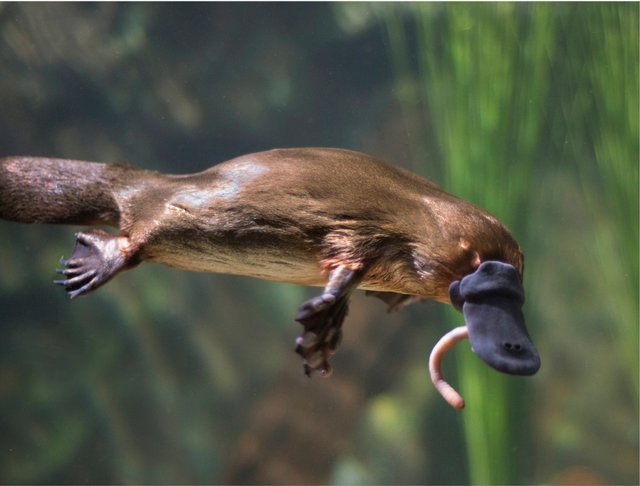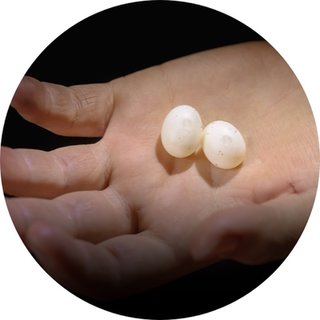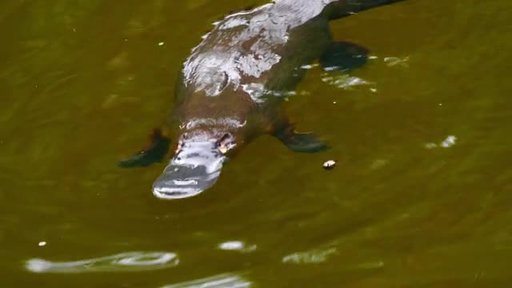ThelateafternoonsunfiltersthroughtheleavesontheedgeofariverinAustralia.Awormwrigglesalongthemurkybottomandcomestorestunderasmallpileofpebbles.Thelightfades,andthewormiswelloutofsightfromhungry predators.
Asmallsplashripplesneartheriverbank.Aweb-footedhunterhasemergedfromitsden.Itclosesitseyesandsealsitsearsandnostrilsagainstthewater.Itpaddlesitspowerfulfrontfeet.Itzipsthroughthewaterlookingforfood.Thewormcannotbeseen,butthishuntercan
sense it.
Thisplatypusdives underwater.

Witheyesclosed,thisplatypusdivesunderwaterandfindsatastywormto eat.
Wavingitssensitiveduckbill-shapedsnoutbackandforth,thehunterpicksupaslightelectricpulseofenergywithinthewormandzeroesin.Suddenly,itopensitstoothlessmouth,scoopsupthepebblesandtheworm,anddartsuptothesurfacewhereittakesadeepbreaththengrindsthewholethingintoamush.Thestonesdribbleoutofitsmouth,andthehunterswallowsthesoftwormy mush.
Thisamazingpredatorisaplatypus,anditisoneweird-lookingcreature.Butthesumisgreaterthanitsparts,anditisoneofthemostuniqueanimalsontheplanet.Platypuseshavesomeamazingbody-designfeaturesthatsetthemapartfromyouraveragemammal.Itstartsfrom birth.
PlatypusParenting
It’searlymorningandtheinkydarknessisliftingovertheriver.Aplatypususesherwebbedfrontfeettopaddletothebank.Shepullsherselfoutofthewaterandshakesbriefly.Hercoatispracticallydryalready.Onceonland,sheretractsthewebbinginherfeetandwaddlestoherden.Shewrigglesthroughtheopening.Itiswarmanddry.Shebeginstodigsoilloosewithhersharpclawstocreateanewchamberoffthemain burrow.
Snoutfirst,sheentersthechamberandkicksthesoilwithherbackfeettosealherselfoff.Oncesettled,shelaysoneleatheryegg.Thenshelaysasecondegg.Theyaresmall—thesizeofmarbles.Sheholdstheeggsbetweenherbodyandtailtokeepthem warm.
Afterabouttwoweeks,themarble-sizedeggstrembleandtear.Outofeacheggemergesabean-size,pinkplatypus.Theyarehairless,blind,andhelplessastheyundertakethelongjourneyofafewinchestotheirmother’sbelly.Whentheyreachthespot,theylatchontoherfurandwaittobe fed.
Likeallmammals,platypusesnursetheirbabiesaftertheyhatch.Butunlikeothermammals,theynursetheminauniqueway.Milkleaksfromopeningsbetweenthefoldsofherbellyskin.Thebabiessuckthemilkupthroughher fur.
Thebabiesliveonmilkforthreetofourmonths.Whentheyareabletoswimandeatbythemselves,theyarereadyforlifeontheir own.
Platypusesnursetheiryoungin burrows.
WhenthefirstplatypuswassenttoscientistsinEnglandin1799,itcausedquiteastir.Mostwereconvinceditwasahoax.Theythoughtsomeonehadsewntogetherbitsofanimalstoplayajoke.Howcouldamammalhaveabeak,webbedfeet,andlay eggs?Forthatmatter,howcouldabirdhavefurandnursebabies?Becausetheplatypuswassodifferent,noonecouldbelieveitwas real.


Platypuseggsarethesizeof marbles.
